Rice is a rich source of macro and micronutrients. During rice milling,
the fat and micronutrient-rich bran layers are removed to produce the
commonly consumed starch-rich white rice. White rice is the number one
staple food in the rice countries of the southeast and northeast Asia,
one of the most densely populated regions in the world. Of the world’s
rice production, 90% is grown and consumed in Asia. On average, 30% of
calories come from rice and this can increase to more than 70% in some
low-income countries. In most languages of these regions, the words for
rice and food are synonymous. It should be noted that rice is also an
important staple food in several African countries and the
Americas.
In recent years, rice fortification
technology has evolved. As a result, rice fortification at scale is
gaining momentum as a feasible and cost-effective strategy to address
micronutrient deficiencies. To date, about 15 countries have introduced
rice fortification on either a mandatory or a voluntary basis, embedded
in social safety nets, or at a limited scale through
trials.
Fortification of rice needs precision mixing;
for this, we have specially designed “DOUBLE SHAFT PADDLE
MIXER”. This is a new generation mixing technology patented by
the Norwegian inventor Halvor Forberg and is also popularly known as
the Forberg fluidized zone mixer with demanding precision Mixing and to
provide homogeneous mixtures of physically adverse particles
incorporated at various level in the mix.
This
machine is based on a weightless zone or fluidized zone mixing
technology with many modifications at Lark Engineering. In this machine,
two shafts are positioned in a double drum housing on which series of
blades are fixed. The two shafts rotate at a specific peripheral speed
in the opposite direction while paddles on each shaft overlap in the
middle of the mixing drum. This lift all the ingredients in the middle
and creates a fluidized zone by neutralizing gravitational forces
working on particles of different ingredients having different shapes,
sizes & density. Hence, a very homogeneous product is received.
The next step is to discharge the highly homogenized material from the
mixer without segregation. For this, the material is discharged very
quickly with the help of two pneumatically operated large bottom
discharge doors. The filling level is another feature of this mixer, as
it can work equally well with 40% overfilling and 60% underfilling of
its nominal filling level. The nominal filling level is the level up to
the shaft of the mixer.
For liquid addition, the
material should be filled at least 120% level when pin-mill or FDB is
used.
Homogeneous mixing between RICE and FRK can be
achieved up to 1:100, 1:200 and even up to 1:2000 with negligible rice
breakage and dust formation. In collaboration with the Government of
Bhutan and the World Food Programme committee, we recently designed a
complete project for Rice Fortification of 5 MT/HR. The project is fully
automatic with PLC Controlled auto batching and
auto-bagging.
We have a wide range of projects as per
the customer need starting from 1 TPH to 25 TPH for Rice
Fortification.
Here are some details of the in house
successful trial of Mixing of Standard Rice with Fortified Rice in the
presence of Bhutan Government officials & world food program
committee representative;
Double shaft
Paddle Mixer
Food
Grade Color in 1 kg of rice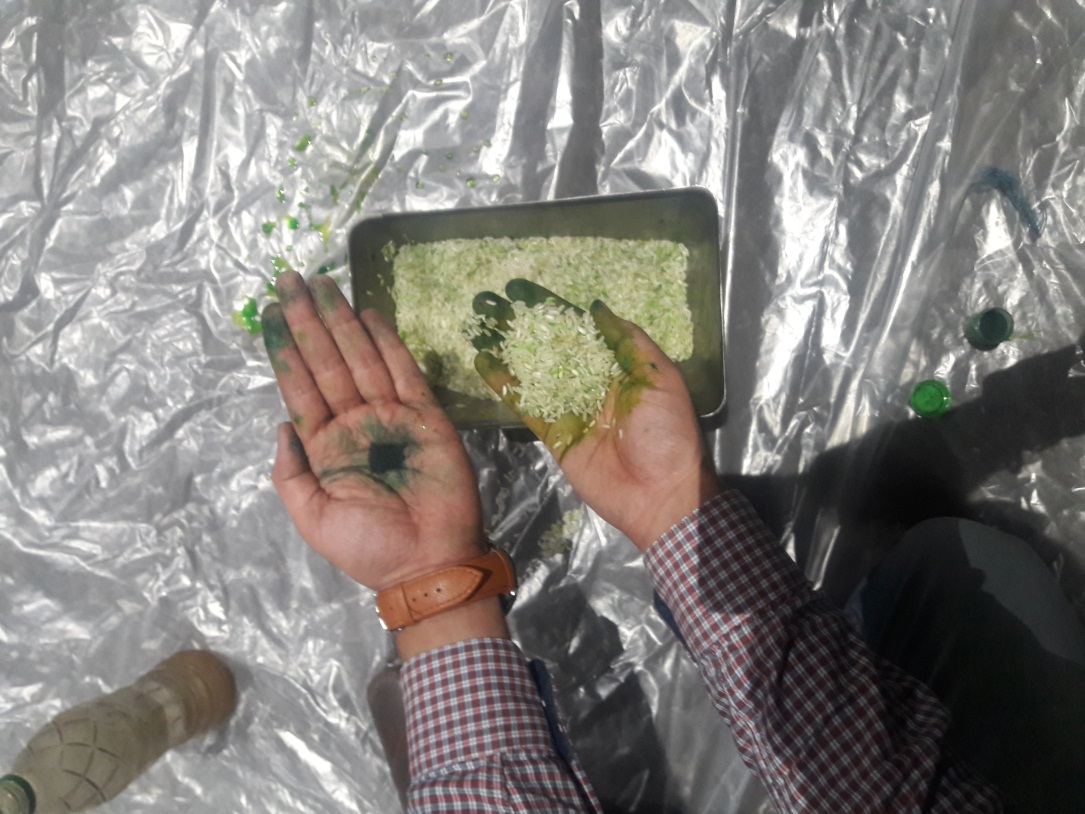
Colored
Rice – Approx. 1 KG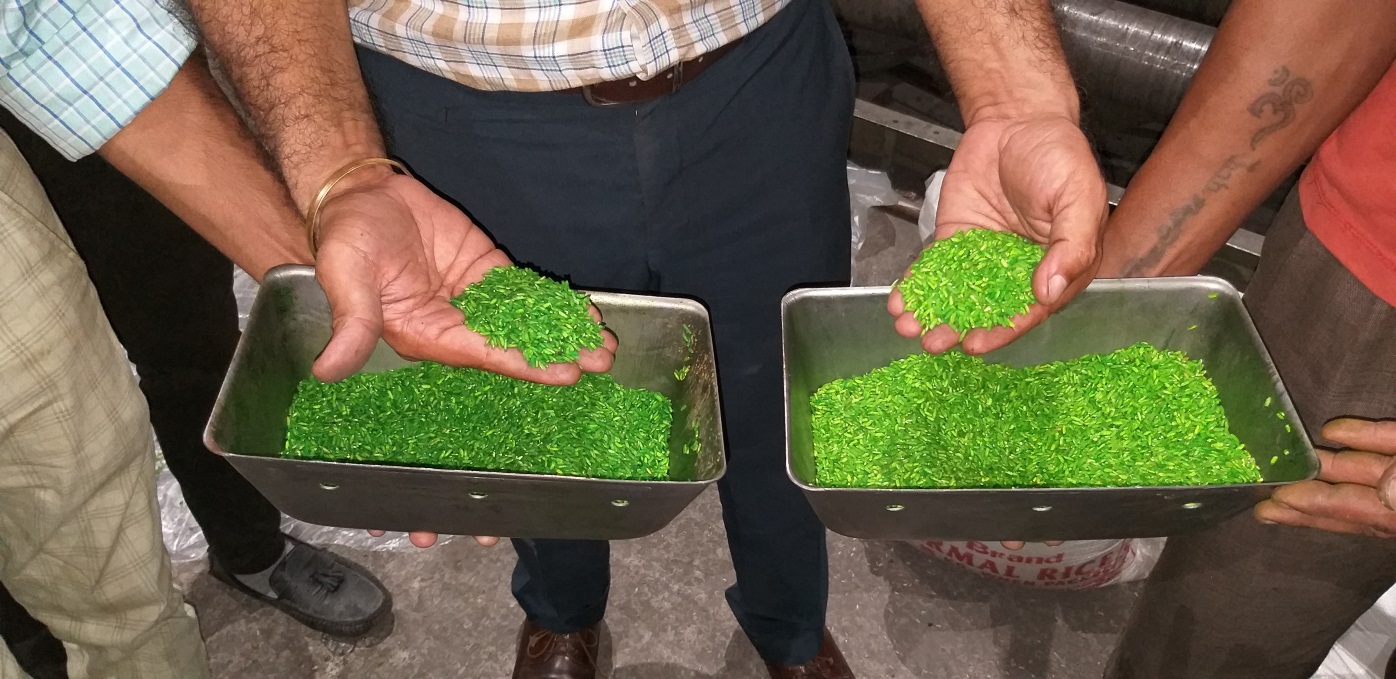
100 kg
rice in Double Shaft Paddle Mixer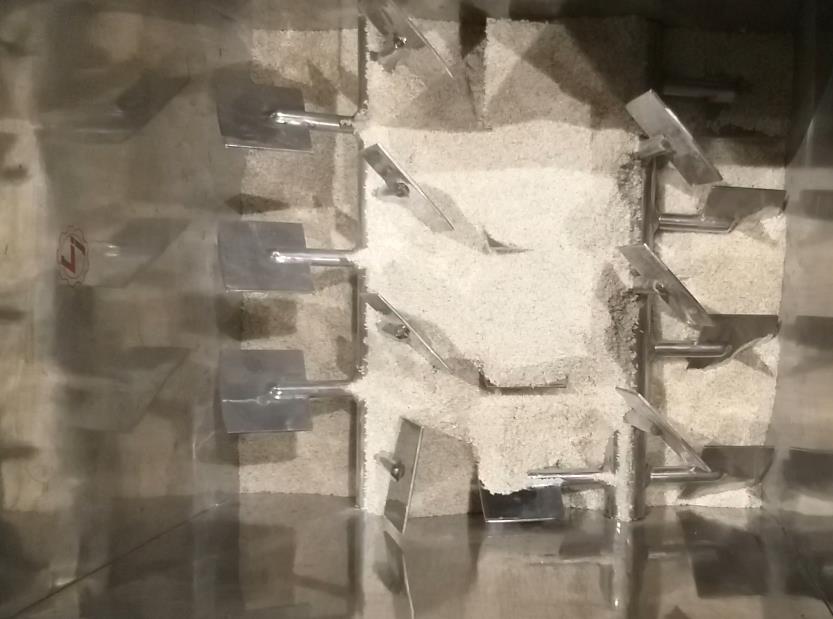
1
kg. Colored Rice – Addition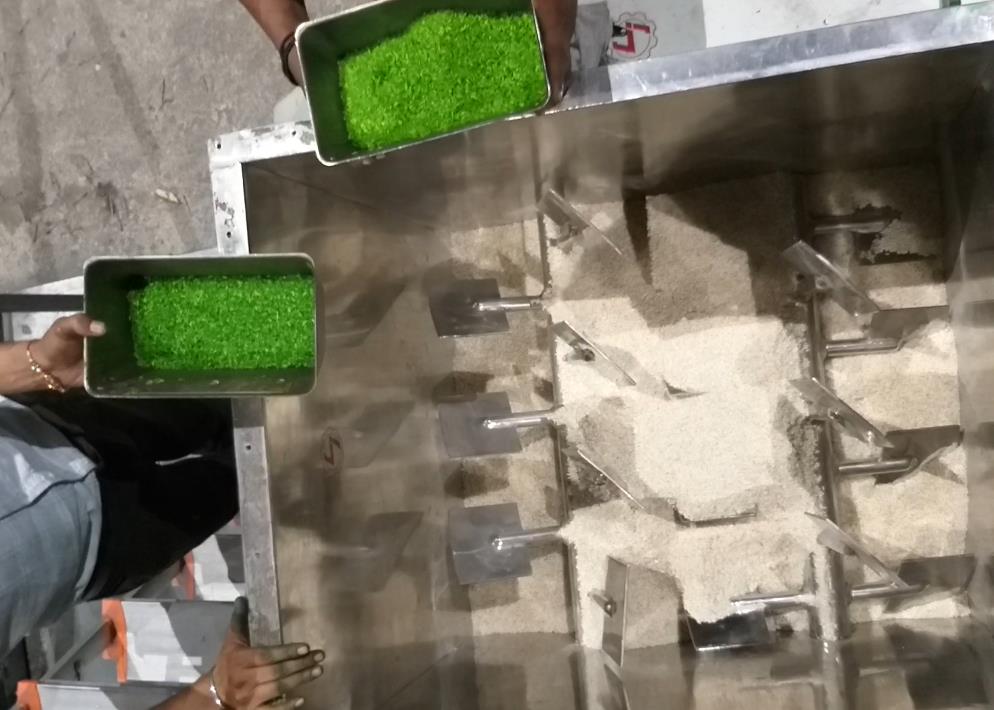

After 2
seconds
After 3
seconds
After 5
seconds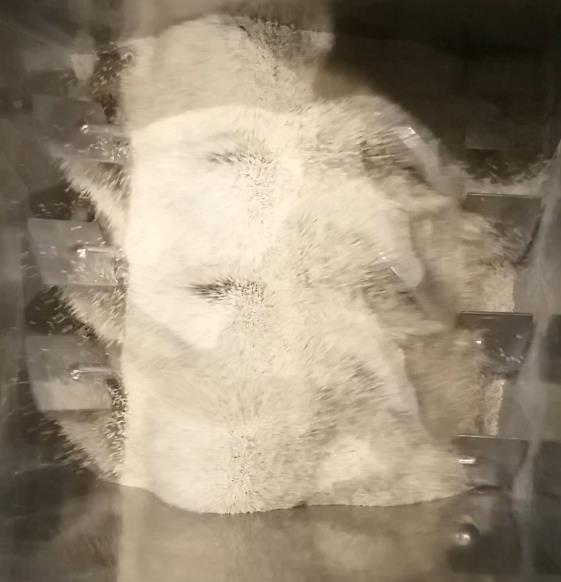
After 7
seconds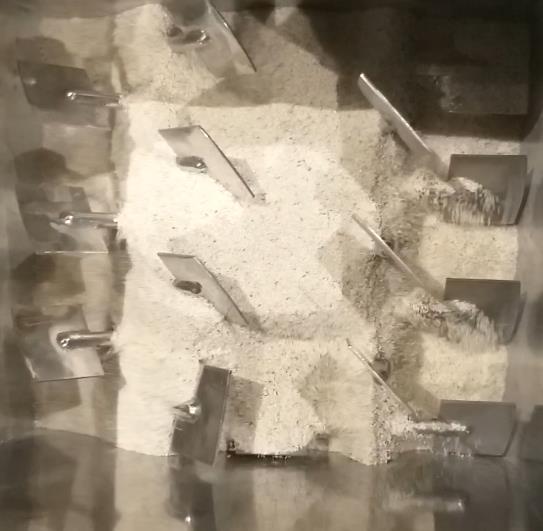
Homogeneous
Dispersion within 7 seconds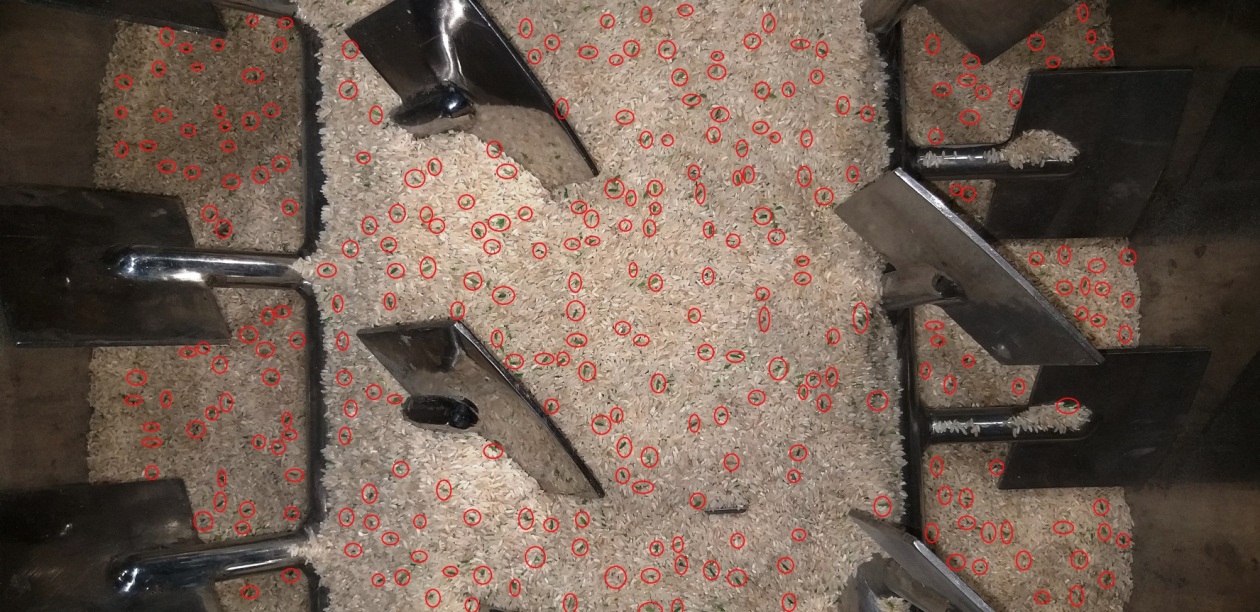
The above information is based on data collected
from our existing customers & internet sources and is only for
your reference. As expertise in feed mill engineering only, Lark
Engineering will not be responsible for any type of loss occur due to
the above stated information.